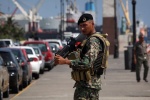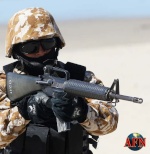Primer fusil automático del mundo [Hecho en Mexico]
+26
V.Lennin
Hunter1975
Eze_Hunter_JxG
MX-Commando
TU-160 Tupolev
El j0rge
General Pimienta.
Heavy
Danger
miembro del P.A.D.
BeRsErKeR3t
Jaz223
charro del misterio
Thesemar
Lanceros de Toluca
Defekator
ORAI
maxdeniel
CAPITAN MEXICO
damianpaya.
julianin
Shadow
MICTIAN
mossad
Hasso
Leon
30 participantes
Foro Defensa México :: Ejercito Mexicano :: Industria Militar Mexicana; Armas, Equipos, Vehiculos del Ejermex.
Página 2 de 2.
Página 2 de 2. •  1, 2
1, 2
![Primer fusil automático del mundo [Hecho en Mexico] - Página 2 Empty](https://2img.net/i/empty.gif) El Glorioso fusil Mexicano Mondragón como muestra de la capacidad Mexicana
El Glorioso fusil Mexicano Mondragón como muestra de la capacidad Mexicana
Recuerdo del primer mensaje :
Aqui les dejo esta informacion de Wikipedia sobre el fusil orgullosamente Mexicano Mondragón, este fue el primer fusil automatico del mundo y usado en su tiempo por muchos de los ejercitos mas importantes de su tiempo.
Saludos.
León
Mondragón rifle
From Wikipedia, the free encyclopedia
(Redirected from Mondragón (rifle))
Jump to: navigation, search
Mondragón was a Mexican automatic rifle.
Fusil M-1908 "Mondragón"
Type Automatic rifle
Place of origin Mexico
Service history
In service 1887-1921
Used by Mexico
Switzerland
Chile
Republic of Korea
Brazil
Peru
France
Republic of China
People's Republic of China
Vietnam
Imperial Japan
Austro-Hungarian Empire
Imperial Germany
Nazi Germany
Wars Mexican Civil War
Ecuadorian–Peruvian War
Chinese Civil War
Second Sino-Japanese War
Korean War
World War I
World War II
Production history
Designer General Manuel Mondragón
Designed 1884
Manufacturer Dirección General de Industria Militar del Ejército
Produced 1887
Number built 1,175,400
Variants automatic rifle, carbine, sniper rifle, light machine gun.
Specifications
Weight 4.18 kg (9 lb 3oz) empty
Length 1105 mm (43.5 in)
--------------------------------------------------------------------------------
Cartridge 7 x 57 mm Mauser
Caliber 7x57mm Mauser
Action gas-operated, rotating bolt
Rate of fire 750 - 1400 rounds/min depending on variant
Muzzle velocity 710 m/s (2300 ft/s)
Effective range 200 m to 550 m sight marks
Maximum range 900m (984 yd)
Feed system 8 round box,
10 round box,
20 round box,
30 round drum,
100 round drum
Sights Iron sights or Scope
The Mondragón was the world's first automatic rifle and was designed by General Manuel Mondragón. He began work in 1882 and patented the weapon in 1887. It was gas-operated with a cylinder and piston arrangement, now very familiar but unusual at the time, and rotating bolt, locked by lugs in helical grooves in the receiver; it was also possible to operate it as a simple straight-pull bolt action. The caliber was 7 mm (.284 in) Mauser with an 8-round box magazine; a trial LMG version had a 20-round box and provision for a bipod, like the BAR; the Mexican Army also used a 100-round drum magazine for a light machine gun variant produced in 1910. It was known for its extreme accuracy and stopping power but suffered from high recoil when fired on its fully automatic setting. The Mondragón was so accurate that the German Army added a scope to it and used it in single shot mode as a sniper rifle during World War II. The Mondragón also had a light machine variant that when used with its 100-round magazine had similar fire power to the MG-42 but with far more portability and much less recoil. For this reason the Mexican army used an improved light machine gun variant of the Mondragón up until 1943 when it was replaced with the Mendoza M-1943 general purpose infantry machine gun.
Because of the Mexican Revolution, few facilities in Mexico were able to mass-produce it and those that could were not able to shut down their assembly plants for the required retooling time needed to initiate production of the new rifles. Mondragón attempted to interest a U.S. firm, without success as they thought that automatic rifles were not practical and could not be produced in the numbers that Mexico wanted . He then turned to Schweizerische Industrie Gesellschaft (SIG), of Neuhausen am Rheinfall, who agreed to manufacture the rifle. In 1901 the first rifles were shipped to Mexico and issued to the army as the Fusil Mondragón Modelo 1900 with an 8 round magazine. In 1908 During the Mexican revolution a completely Mexican manufactured version was again issued to the Mexican Army as the Fusil Porfirio Diaz Sistema Mondragón Modelo 1908 this time with the 20 round magazine. By 1910 however adequate facilities were completed in the Mexican cities of Veracruz, Ciudad Juárez, Guanajuato, and Mexico City where they were produced until 1921.
With World War I, Germany bought the remainder of SIG's stock that had not been sent to Mexico, issuing them to the infantry, where they proved highly susceptible to mud and dirt in the trenches (a problem familiar even to less complex bolt action rifles such as the Ross and Kar 98). Instead, realizing ther potential as portible yet powerful auto rifle they were withdrawn by the Central German command and reissued, with 30-round helical magazines, to aircraft crews as the Fliegerselbstlader Karabiner 1915 (Flier's Selfloading Carbine model 1915), until sufficient numbers of machine guns were available. Although they did not function well in the thick moist mud and dirt of central Europe they proved to work well in hot and arid climates such as the north of Mexico meaning that the Mondragón did not have a problem with dirt getting in it but, more of a problem with moisture as it would still work well when it would get dry sand and dust in it mechanism, although the Mexican manufactured 1908 model fixed his problem with slight improvements to the firing mechanism and the barrel.
In the early 1930s the Mexican government decided that they could make a profit trying to market the weapon on the international stage. At the time the Mondragón was still considered a quite advanced weapon with its only true rival being the BAR which weighed more and had far less accuracy. It was sold to many Mexican allied nations including Chile, Brazil, Peru and Nationalist China. The Weimar Republic of Germany and later Nazi Germany purchased rights to licence manufacture the weapon along with Austria and Japan. Japan however manufactured less than five thousand, as Japanese machining technologies at the time were not advanced enough to mass produce the delicate firing mechanism. When Mao Zedong's People's Liberation Army declared victory over nationalist forces in 1949 many of the nationalist's weapons were seized by the communist forces and almost all of the Chinese Mondragón rifles were redistributed to the People's Liberation Army where they remained in active service as sniper rifles and support weapons up until the late 1980s although a small number of them still remain in service with auxiliary Peoples Liberation Army Reserve Force units.
During World War II there were still many of the Mexican rifles in German stocks left over from World War I. These were given as auxiliary weapons to the Waffen SS or sometimes as replacements or complementary weapons to the Kar 98k in the early parts of the war. During the siege of Stalingrad some Wehrmacht troops used them instead of the Kar 98k as they were less susceptible to the frigid climate, and during the later part of the war they were issued to many Volkssturm groups. They also found their way into France when they were given as a donation by the Third Reich to the German allied Vichy French army, many would later be captured and used by the French resistance. Few of the German versions with the helical magazine survive, however the Mexican army still uses the Mexican version in parades and other military celebrations as a ceremonial rifle.[1]
Contents [hide]
1 Users
2 References
3 See also
4 External links
[edit] Users
Mexico
Chile
Republic of Korea
Brazil
Peru
Republic of China
People's Republic of China
Vietnam
Empire of Japan
Austria-Hungary
German Empire
Nazi Germany
[edit] References
^ Fitzsimons, Bernard, ed. "Mondragón", Illustrated Encyclopedia of Weapons and Warfare, Volume 18, pp.1933-35. London: Phoebus Publishing Company, 1978.
[edit] See also
BAR
Huot
Garand
[edit] External links
[Tienes que estar registrado y conectado para ver este vínculo]
Retrieved from "http://en.wikipedia.org/wiki/Mondrag%C3%B3n_rifle"
Categories: World War I infantry weapons | World War I machine guns | World War II infantry weapons | Aircraft weapons | World War II semi-automatic rifles | Weapons of MexicoViewsArticle Discussion Edit this page History Personal toolsTry Beta Log in / create account Navigation
Main page
Contents
Featured content
Current events
Random article
Search
Interaction
About Wikipedia
Community portal
Recent changes
Contact Wikipedia
Donate to Wikipedia
Help
Toolbox
What links here
Related changes
Upload file
Special pages
Printable version
Permanent link
Cite this page
Languages
Español
Italiano
日本語
This page was last modified on 14 August 2009 at 10:05. Text is available under the Creative Commons Attribution-ShareAlike License; additional terms may apply. See Terms of Use for details.
Aqui les dejo esta informacion de Wikipedia sobre el fusil orgullosamente Mexicano Mondragón, este fue el primer fusil automatico del mundo y usado en su tiempo por muchos de los ejercitos mas importantes de su tiempo.
Saludos.
León
Mondragón rifle
From Wikipedia, the free encyclopedia
(Redirected from Mondragón (rifle))
Jump to: navigation, search
Mondragón was a Mexican automatic rifle.
Fusil M-1908 "Mondragón"
Type Automatic rifle
Place of origin Mexico
Service history
In service 1887-1921
Used by Mexico
Switzerland
Chile
Republic of Korea
Brazil
Peru
France
Republic of China
People's Republic of China
Vietnam
Imperial Japan
Austro-Hungarian Empire
Imperial Germany
Nazi Germany
Wars Mexican Civil War
Ecuadorian–Peruvian War
Chinese Civil War
Second Sino-Japanese War
Korean War
World War I
World War II
Production history
Designer General Manuel Mondragón
Designed 1884
Manufacturer Dirección General de Industria Militar del Ejército
Produced 1887
Number built 1,175,400
Variants automatic rifle, carbine, sniper rifle, light machine gun.
Specifications
Weight 4.18 kg (9 lb 3oz) empty
Length 1105 mm (43.5 in)
--------------------------------------------------------------------------------
Cartridge 7 x 57 mm Mauser
Caliber 7x57mm Mauser
Action gas-operated, rotating bolt
Rate of fire 750 - 1400 rounds/min depending on variant
Muzzle velocity 710 m/s (2300 ft/s)
Effective range 200 m to 550 m sight marks
Maximum range 900m (984 yd)
Feed system 8 round box,
10 round box,
20 round box,
30 round drum,
100 round drum
Sights Iron sights or Scope
The Mondragón was the world's first automatic rifle and was designed by General Manuel Mondragón. He began work in 1882 and patented the weapon in 1887. It was gas-operated with a cylinder and piston arrangement, now very familiar but unusual at the time, and rotating bolt, locked by lugs in helical grooves in the receiver; it was also possible to operate it as a simple straight-pull bolt action. The caliber was 7 mm (.284 in) Mauser with an 8-round box magazine; a trial LMG version had a 20-round box and provision for a bipod, like the BAR; the Mexican Army also used a 100-round drum magazine for a light machine gun variant produced in 1910. It was known for its extreme accuracy and stopping power but suffered from high recoil when fired on its fully automatic setting. The Mondragón was so accurate that the German Army added a scope to it and used it in single shot mode as a sniper rifle during World War II. The Mondragón also had a light machine variant that when used with its 100-round magazine had similar fire power to the MG-42 but with far more portability and much less recoil. For this reason the Mexican army used an improved light machine gun variant of the Mondragón up until 1943 when it was replaced with the Mendoza M-1943 general purpose infantry machine gun.
Because of the Mexican Revolution, few facilities in Mexico were able to mass-produce it and those that could were not able to shut down their assembly plants for the required retooling time needed to initiate production of the new rifles. Mondragón attempted to interest a U.S. firm, without success as they thought that automatic rifles were not practical and could not be produced in the numbers that Mexico wanted . He then turned to Schweizerische Industrie Gesellschaft (SIG), of Neuhausen am Rheinfall, who agreed to manufacture the rifle. In 1901 the first rifles were shipped to Mexico and issued to the army as the Fusil Mondragón Modelo 1900 with an 8 round magazine. In 1908 During the Mexican revolution a completely Mexican manufactured version was again issued to the Mexican Army as the Fusil Porfirio Diaz Sistema Mondragón Modelo 1908 this time with the 20 round magazine. By 1910 however adequate facilities were completed in the Mexican cities of Veracruz, Ciudad Juárez, Guanajuato, and Mexico City where they were produced until 1921.
With World War I, Germany bought the remainder of SIG's stock that had not been sent to Mexico, issuing them to the infantry, where they proved highly susceptible to mud and dirt in the trenches (a problem familiar even to less complex bolt action rifles such as the Ross and Kar 98). Instead, realizing ther potential as portible yet powerful auto rifle they were withdrawn by the Central German command and reissued, with 30-round helical magazines, to aircraft crews as the Fliegerselbstlader Karabiner 1915 (Flier's Selfloading Carbine model 1915), until sufficient numbers of machine guns were available. Although they did not function well in the thick moist mud and dirt of central Europe they proved to work well in hot and arid climates such as the north of Mexico meaning that the Mondragón did not have a problem with dirt getting in it but, more of a problem with moisture as it would still work well when it would get dry sand and dust in it mechanism, although the Mexican manufactured 1908 model fixed his problem with slight improvements to the firing mechanism and the barrel.
In the early 1930s the Mexican government decided that they could make a profit trying to market the weapon on the international stage. At the time the Mondragón was still considered a quite advanced weapon with its only true rival being the BAR which weighed more and had far less accuracy. It was sold to many Mexican allied nations including Chile, Brazil, Peru and Nationalist China. The Weimar Republic of Germany and later Nazi Germany purchased rights to licence manufacture the weapon along with Austria and Japan. Japan however manufactured less than five thousand, as Japanese machining technologies at the time were not advanced enough to mass produce the delicate firing mechanism. When Mao Zedong's People's Liberation Army declared victory over nationalist forces in 1949 many of the nationalist's weapons were seized by the communist forces and almost all of the Chinese Mondragón rifles were redistributed to the People's Liberation Army where they remained in active service as sniper rifles and support weapons up until the late 1980s although a small number of them still remain in service with auxiliary Peoples Liberation Army Reserve Force units.
During World War II there were still many of the Mexican rifles in German stocks left over from World War I. These were given as auxiliary weapons to the Waffen SS or sometimes as replacements or complementary weapons to the Kar 98k in the early parts of the war. During the siege of Stalingrad some Wehrmacht troops used them instead of the Kar 98k as they were less susceptible to the frigid climate, and during the later part of the war they were issued to many Volkssturm groups. They also found their way into France when they were given as a donation by the Third Reich to the German allied Vichy French army, many would later be captured and used by the French resistance. Few of the German versions with the helical magazine survive, however the Mexican army still uses the Mexican version in parades and other military celebrations as a ceremonial rifle.[1]
Contents [hide]
1 Users
2 References
3 See also
4 External links
[edit] Users
Mexico
Chile
Republic of Korea
Brazil
Peru
Republic of China
People's Republic of China
Vietnam
Empire of Japan
Austria-Hungary
German Empire
Nazi Germany
[edit] References
^ Fitzsimons, Bernard, ed. "Mondragón", Illustrated Encyclopedia of Weapons and Warfare, Volume 18, pp.1933-35. London: Phoebus Publishing Company, 1978.
[edit] See also
BAR
Huot
Garand
[edit] External links
[Tienes que estar registrado y conectado para ver este vínculo]
Retrieved from "http://en.wikipedia.org/wiki/Mondrag%C3%B3n_rifle"
Categories: World War I infantry weapons | World War I machine guns | World War II infantry weapons | Aircraft weapons | World War II semi-automatic rifles | Weapons of MexicoViewsArticle Discussion Edit this page History Personal toolsTry Beta Log in / create account Navigation
Main page
Contents
Featured content
Current events
Random article
Search
Interaction
About Wikipedia
Community portal
Recent changes
Contact Wikipedia
Donate to Wikipedia
Help
Toolbox
What links here
Related changes
Upload file
Special pages
Printable version
Permanent link
Cite this page
Languages
Español
Italiano
日本語
This page was last modified on 14 August 2009 at 10:05. Text is available under the Creative Commons Attribution-ShareAlike License; additional terms may apply. See Terms of Use for details.
Última edición por Leon el Agosto 29th 2009, 23:15, editado 1 vez
Leon- Policia Primero [Policia Federal]
![Policia Primero [Policia Federal] Policia Primero [Policia Federal]](https://2img.net/i/itest/ranks/default/default2.gif)
-
 Cantidad de envíos : 61
Cantidad de envíos : 61
Fecha de inscripción : 14/06/2009
![Primer fusil automático del mundo [Hecho en Mexico] - Página 2 Empty](https://2img.net/i/empty.gif) Re: Primer fusil automático del mundo [Hecho en Mexico]
Re: Primer fusil automático del mundo [Hecho en Mexico]
[Tienes que estar registrado y conectado para ver esa imagen]

Absolut- Miembro Honorario

-
 Cantidad de envíos : 726
Cantidad de envíos : 726
Fecha de inscripción : 25/01/2012 Edad : 31
![Primer fusil automático del mundo [Hecho en Mexico] - Página 2 Empty](https://2img.net/i/empty.gif) Re: Primer fusil automático del mundo [Hecho en Mexico]
Re: Primer fusil automático del mundo [Hecho en Mexico]
Faltan las de la bayoneta, que de por si es revolucionaria por su diseño aun asi +1
![Primer fusil automático del mundo [Hecho en Mexico] - Página 2 Empty](https://2img.net/i/empty.gif) Re: Primer fusil automático del mundo [Hecho en Mexico]
Re: Primer fusil automático del mundo [Hecho en Mexico]
Una maravilla de su tiempo que aún hoy se me hace completamente vigente. Debemos de tomar estos ejemplos de oportunidades de desarrollo desaprovechadas. Creo que ahorita las condiciones políticas en nuestro país están dadas para que se desarrollen esta clase de proyectos.
El Camiche- Recluta

-
 Cantidad de envíos : 10
Cantidad de envíos : 10
Fecha de inscripción : 03/02/2013 Edad : 63
![Primer fusil automático del mundo [Hecho en Mexico] - Página 2 Empty](https://2img.net/i/empty.gif) Re: Primer fusil automático del mundo [Hecho en Mexico]
Re: Primer fusil automático del mundo [Hecho en Mexico]
un orgullo de la manufactura mexicana hacen falta mas esfuerzos para retomar ese camino

ORAI- Miembro Honorario

-
 Cantidad de envíos : 1176
Cantidad de envíos : 1176
Fecha de inscripción : 02/08/2010 Edad : 37
![Primer fusil automático del mundo [Hecho en Mexico] - Página 2 Empty](https://2img.net/i/empty.gif) Re: Primer fusil automático del mundo [Hecho en Mexico]
Re: Primer fusil automático del mundo [Hecho en Mexico]
hace un tiempo pasaron un documental en history, llamado 101 armas que cambiaron al mundo y pusieron entre ellas al rifle M1 GRAND y cuando hablaban sobre el dijieron que fue el primer rifle semi-automatico efectivo en el mundo.
ahora cuando dicen que fue el primero en ser "efectivo" me hace pensar que no se refieren a que fue el primer rifle semi-automatico del mundo sino que fue el primero de ese tipo en tener un buen funcionamiento, con eso me pregunto
¿tenia un mal desempeño el Mondragón? o de plano se la fletaron bien gacho y namas lo dijieron para no incluirnos por ser aztecas?
adelantenle al minuto 53:16 del vídeo.
ahora cuando dicen que fue el primero en ser "efectivo" me hace pensar que no se refieren a que fue el primer rifle semi-automatico del mundo sino que fue el primero de ese tipo en tener un buen funcionamiento, con eso me pregunto
¿tenia un mal desempeño el Mondragón? o de plano se la fletaron bien gacho y namas lo dijieron para no incluirnos por ser aztecas?
adelantenle al minuto 53:16 del vídeo.

phanter- Señalero

-
 Cantidad de envíos : 965
Cantidad de envíos : 965
Fecha de inscripción : 21/11/2012
![Primer fusil automático del mundo [Hecho en Mexico] - Página 2 Empty](https://2img.net/i/empty.gif) Re: Primer fusil automático del mundo [Hecho en Mexico]
Re: Primer fusil automático del mundo [Hecho en Mexico]
mas bien a que esos pendejos no sabian ni que pedo con su vida.
![Primer fusil automático del mundo [Hecho en Mexico] - Página 2 Empty](https://2img.net/i/empty.gif) Re: Primer fusil automático del mundo [Hecho en Mexico]
Re: Primer fusil automático del mundo [Hecho en Mexico]
phanter escribió:hace un tiempo pasaron un documental en history, llamado 101 armas que cambiaron al mundo y pusieron entre ellas al rifle M1 GRAND y cuando hablaban sobre el dijieron que fue el primer rifle semi-automatico efectivo en el mundo.
ahora cuando dicen que fue el primero en ser "efectivo" me hace pensar que no se refieren a que fue el primer rifle semi-automatico del mundo sino que fue el primero de ese tipo en tener un buen funcionamiento, con eso me pregunto
¿tenia un mal desempeño el Mondragón? o de plano se la fletaron bien gacho y namas lo dijieron para no incluirnos por ser aztecas?
adelantenle al minuto 53:16 del vídeo.
Sin duda alguna fue el primer fusil que entro en servicio ya con un diseño final, segun se el mondragon si prestaba buen servicio pero no tan confiable...
el m1 garand fue realmente un exito de fusil....

BeRsErKeR3t- Comisario General [Policía Federal]
![Comisario General [Policía Federal] Comisario General [Policía Federal]](https://2img.net/i/itest/ranks/default/default5.gif)
-
 Cantidad de envíos : 1154
Cantidad de envíos : 1154
Fecha de inscripción : 03/12/2009
Página 2 de 2. •  1, 2
1, 2
 Temas similares
Temas similares» Hecho en México: Visita a la Fábrica de Aguila Municiones
» "Hecho en México" (película)
» Policia de primer mundo, Mexicali!
» La Fuerza Aérea Mexicana a lo largo de cien años
» China Muestra al Mundo su Primer Portaviones Operativo
» "Hecho en México" (película)
» Policia de primer mundo, Mexicali!
» La Fuerza Aérea Mexicana a lo largo de cien años
» China Muestra al Mundo su Primer Portaviones Operativo
Foro Defensa México :: Ejercito Mexicano :: Industria Militar Mexicana; Armas, Equipos, Vehiculos del Ejermex.
Página 2 de 2.
Permisos de este foro:
No puedes responder a temas en este foro.![Primer fusil automático del mundo [Hecho en Mexico] - Página 2 2vwzcep](https://2img.net/h/oi62.tinypic.com/2vwzcep.jpg)

 Índice
Índice Últimas imágenes
Últimas imágenes Registrarse
Registrarse Conectarse
Conectarse
